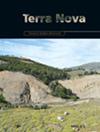来自印度梅加拉亚夏隆高原的甲藻囊胞:古新世晚期-始新世早期过渡时期的古生物学特征
IF 1.7
3区 地球科学
Q2 GEOSCIENCES, MULTIDISCIPLINARY
引用次数: 0
摘要
本文介绍了来自印度梅加拉亚邦东 Khasi 山 Lakadong 砂岩组的一个新的古新世晚期-始新世早期剖面、古生物组合和稳定碳同位素。古新世-始新世过渡(PET)的地层标志是甲藻囊胞(Apectodinium augustum,现为 Axiodinium augustum 的类群)和负碳同位素偏移。古植物组合表明,该序列代表了降雨量大的温暖、潮湿的热带至亚热带环境。拉卡东砂岩组的沉积环境被解释为海相沉积。本研究在该区段的新发现表明,在 CS5-15a 出现了由 A. augustum 组成的 Apectodinium acme。本文章由计算机程序翻译,如有差异,请以英文原文为准。
Dinoflagellate cysts from the Shillong Plateau, Meghalaya (India): Palynological signature during the late Palaeocene–early Eocene Transition
The paper presents a new section of the late Palaeocene‐early Eocene, palynological assemblages and stable carbon isotopes from the Lakadong sandstone member of the East Khasi Hills of Meghalaya (India). The Palaeocene‐Eocene transition (PET) is marked by stratigraphic markers of dinoflagellate cysts (taxa of Apectodinium augustum , now Axiodinium augustum ) and negative carbon isotope excursion. The palynofloral assemblage indicates the sequence represents warm, humid tropical to subtropical conditions with heavy rainfall. The depositional environment of the Lakadong Sandstone Member is interpreted to be neritic. The new insights of this study in this section suggest the PET with the occurrence of Apectodinium acme consisting of A. augustum at CS5‐15a.
求助全文
通过发布文献求助,成功后即可免费获取论文全文。
去求助
来源期刊

Terra Nova
地学-地球科学综合
CiteScore
4.80
自引率
8.30%
发文量
59
审稿时长
2.3 months
期刊介绍:
Terra Nova publishes short, innovative and provocative papers of interest to a wide readership and covering the broadest spectrum of the Solid Earth and Planetary Sciences. Terra Nova encompasses geology, geophysics and geochemistry, and extends to the fluid envelopes (atmosphere, ocean, environment) whenever coupling with the Solid Earth is involved.
 求助内容:
求助内容: 应助结果提醒方式:
应助结果提醒方式:


